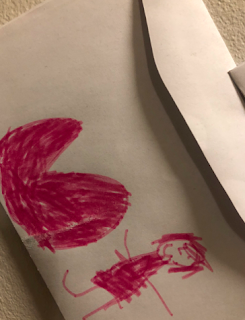DEVELOPING AGENCY AND SELF-EFFICACY WITHIN AND THROUGH RELATIONSHIPS
Looking back on our first unit, we decided to create a piece of pedagogical documentation to reflect on what we learned as a group about ‘who we are’, one of our trans-disciplinary themes. Our investigations, proposals and focus were guided by the big idea of the unit: by establishing relationships with others and the environment, people get to know themselves and develop their sense of identity. This understanding helps us to think about our responsibility towards others, the way we connect with people, materials and spaces and the multitude of perspectives, ideas and identities within a group of learners.
As a group of educators, we agreed to start with this unit as we felt the big idea and concepts would fit very well with our focus at the start of the school year: developing a deep sense of togetherness as part of the process of co-constructing ways of being, of living and learning together. We wondered what it means for children to become part of a learning group. How do individual children influence the learning of the group and how does the group influence the learning of individual children? What impact does all of this have on their sense of identity?
The learning goals of the local curriculum fit well with the unit. Early years learning needs to focus on children ‘dealing with feelings, wishes and opinions of self and others, developing independence and social skills and learning to collaborate with others’ (Dutch National Curriculum).
The Centre of the Developing Child at the University of Harvard 2011 writes “young children experience the world as an ‘environment of relationships’, these relationships influence all aspects of their development”. Guided by a deep understanding that ‘everything goes back to the quality of the relationships’ we started our year with the question: ‘how do we develop relationships with others?’ Two other questions: ‘How do we develop a relationship with materials and spaces?’ and ‘How do people develop their sense of identity?’ were just as important as young children often develop relationships through shared interests and possibilities with materials which enhances their sense of identity as a friend, group member and researcher.
How do we develop relationships with others?
During the first weeks of school, we noticed that many children expressed their appreciation of each other through making gifts. Many children were joyful about being reconnected after the summer holiday, while others used a card or drawing to establish new relationships. We often observed children wanting to sit or play ‘close’ to others, using their bodies as a language to express ‘closeness’.
Many drawings, painting and books were made by children, often expressing love for family members and friendship with peers at school and the community.
We negotiated over time how we live and learn together. Teachers and children established agreements about how to treat each other and solve conflicts. This remains an ongoing process as we continue to learn about perspective and compromise and develop empathy.
Play continues to be the driving force behind the learning of the group: a powerful way to learn about ourselves and others, to discover possibilities of materials and to represent ideas. Perhaps play is also ‘a way of gathering’ as children ‘bring energy and enthusiasm’ that generates, echoed in Fiona’s words ‘a shared space of meaning-making, allowing everyone to connect and belong’.
Play evoked questions and wonderings that we documented and explored together as part of our investigation into how we develop a relationship with the world.
How do we develop a relationship with spaces and materials?
Ample time to play supported the children with establishing relationships with spaces and materials. We observed many times how children continued to develop each other’s ideas. This has led to shared understandings that still evolve and often act as ‘starting points’ when children choose to play with certain materials.
As our relationships developed, new discoveries, questions and other shared learning experiences deepened our joy of learning together.
We discovered shared interest for ideas, stories, songs, music and games, created rituals and have collective memories of shared experiences such as field trips and celebrations. This all adds to our sense of belonging and identity as a learning group.
Along the way, all children discovered different things about themselves, others and their worlds. We will continue to learn about the responsibility to consider the well-being of others and ourselves and our own evolving sense of identity.
We are often moved by many gestures of kindness, it seems many children inherently understand that we all want to feel appreciated and seen for who we are. This recalls Vygotsky’s perspective on learning. He emphasised the pivotal importance of belonging and well-being and that ‘emotion and cognition can not be separated’.
In her latest blogpost, Fiona wrote “perhaps initiative is the ‘currency of agency’ - a self-renewing, circulatory resource which sustains our sense of self-efficacy”. Children actively participate in their communities. They have many ideas, are incredibly resourceful and view the school as a place where they can influence. This is how children start to see the world as responsive to their actions.
I wonder:
What guides your thinking at the start of the year in terms of planning?
What do you choose to document?
What captures your attention during this time of the year?
To what extent are children co-constructing and negotiating the curriculum in your school?










